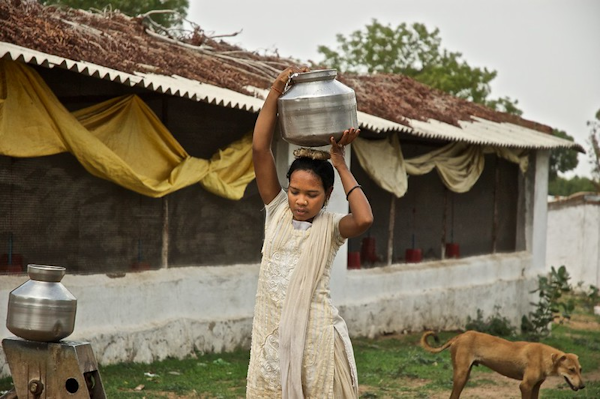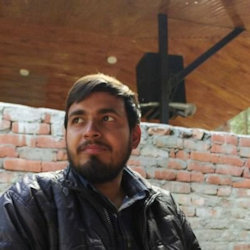SEJournal Online is the digital news magazine of the Society of Environmental Journalists. Learn more about SEJournal Online, including submission, subscription and advertising information.
 |
 |
| Bundelkhand, in central-north India, is one of the country’s most water-scarce regions. But an investigative report finds that government plans to boost water supply by linking two rivers come with extensive environmental and human costs. Photo: Arjun Claire via Flickr Creative Commons (CC by 2.0). |
Inside Story: Uncovering the Environmental Impacts of a Controversial Water Project
Reporter Dheeraj Mishra spent months investigating a controversial project linking two rivers in a water-scarce region of India, gathering thousands of documents from reluctant government agencies and traveling to remote communities talking to affected residents. The resulting project for the New Delhi-based The Wire received an honorable mention in the Society of Environmental Journalists’ 2022 awards contest for small-market investigative reporting. The reporting was lauded by judges as “a rich piece of storytelling and accountability journalism." In the latest Inside Story Q&A, SEJournal recently caught up with Mishra by email for his insights. Here is the conversation, edited for clarity.
SEJournal: How did you get your winning story idea?
Dheeraj Mishra: This idea was in my mind for a long time. I have traveled extensively to Bundelkhand, one of the most water-scarce regions of India, and reported on different aspects of government policies implemented here. Many schemes were announced in the past, and thousands of crores of rupees [hundreds of thousands of U.S. dollars] were blown into them. But still, the problem of the area remains the same.
In the meantime, the government announced another scheme — the Ken-Betwa Link Project, or KBLP, [to direct water in the region]. However, the experts and environmentalists raised serious concerns and warned the government that it is going to add another disaster in the region. But the authorities did not hear these warnings and went ahead without following due process. That's why I decided to report on this matter.
SEJournal: What was the biggest challenge in reporting the pieces and how did you solve that challenge?
After four months, I came up with over
2,000 crucial government documents
that were kept hidden all these years.
Mishra: One of the main challenges that I faced while covering this story was the unavailability of crucial government documents. Most of these papers were kept secret in government offices. For this, I started filing Right to Information, or RTI, applications and had to file multiple RTIs in many departments. But this did not solve the problem completely. The documents were spread in multiple departments and officials refused to collate these papers. So I had to spend many days collecting Ken-Betwa Link Project documents. After four months, I came up with over 2,000 crucial government documents that were kept hidden all these years. After this, I traveled through very difficult terrain to go to affected villages and the forest areas, which will be displaced and deforested under this project.
SEJournal: What most surprised you about your findings?
Mishra: The level of environmental destruction. Just look at the following two facts: 1) An area equivalent to 8,427 football fields is planned to be deforested for this project, and 2) At least 23 lakh [or 2.3 million] trees will be chopped under the Ken-Betwa Link Project, which is more than 1,000 times more than the number of trees uprooted in Aarey Colony, Mumbai [a forested suburb of the city].
My investigation establishes in detail how the Ken-Betwa Link Project can be a huge ecological and wildlife disaster. It is an anti-environmental approach to solving the water crisis because the Ken River does not have enough water to share. Also, these reports show how a very huge amount of money will be spent with negligible achievements.
 |
SEJournal: How did you decide to tell the series and why?
Mishra: I decided to report this story in different parts because it was not possible to cover such a huge matter in a single report. I wanted to cover every possible side of this project in a nuanced and detailed manner. That's why, along with government and experts, I have included voices of those people who are at the receiving end and going to be impacted negatively first because of it.
SEJournal: Does the issue covered in your series have a disproportional impact on people of low income or people with a particular ethnic or racial background? What efforts, if any, did you make to include perspectives of people who may feel that journalists have left them out of public conversation over the years?
Mishra: The sixth part of this series is completely based on the perspectives of those people who are inhabitants of this region and are going to be displaced because of the project. The whole story was conceived after proper consultation with such people, who explain the reality of interlinking the Ken and Betwa rivers.
After these reports, the discussion on the KBLP intensified once again in the media, government and public. On the basis of these documents, local-level activists have started to make the affected people and people around the river more aware. They led a full-fledged campaign and protests on the ground level against the project.
SEJournal: What would you do differently now, if anything, in reporting or telling the series and why?
Mishra: I would like to cover this story through a visual medium as well. This will help those who are not very comfortable with text. Along with this, I shall use graphic and tabular charts to break down the data and maps, so that I can show the reality of this project in a more appealing manner.
SEJournal: What lessons have you learned from your project?
Don't look for rhetorical questions;
look into the real questions, whose
answers can solve the problem.
Mishra: Talk to every side. Talk to as many people as possible. Don't be conformist. Don't look for rhetorical questions; look into the real questions, whose answers can solve the problem. Never ever try to sensationalize the matter and do not compromise the science of it.
SEJournal: What practical advice would you give to other reporters pursuing similar projects, including any specific techniques or tools you used and could tell us more about?
Mishra: Though I do not consider myself someone who can give advice, I can suggest to my fellow journalists that it is most important to hold the government and powerful people accountable in our stories. We must prove — not only tell of — wrongdoing, irregularities and corruption of such authorities. Because of them, millions and millions suffer. So it is not sufficient just to show the pain of being affected because of an environmental or any other crisis, but to tell the public who was behind this.
Governments are spending a lot of money concealing information, and a lot of public documents are kept hidden. It is our job to reveal these secrets, which are in the public interest, and let the people know the reality. We all should work in this direction.
SEJournal: Could you characterize the resources that went into producing your prize-winning reporting (estimated costs, i.e., legal, travel or other; or estimated hours spent by the team to produce)? Did you receive any grants or fellowships to support it?
Mishra: This series was possible because of an Internews’ Earth Journalism Network fellowship. I am highly grateful to the network, which accepted my idea and provided finance to cover the story. We need more such organizations that can support journalists to cover stories without any fear or favor.
It took me around two months to file my complete report. I was all alone, so everything was on me only. I had to spend a lot of time in search of government documents that were kept hidden for a long time. Then I traveled extensively in the project region and spent hours interviewing locals. It is most important to hear the voices of affected people. After all this, when the raw product was on the table, I bifurcated stories into six parts and wrote accordingly.
SEJournal: Is there anything else you would like to share about this story or environmental journalism that wasn’t captured above?
Mishra: There is always something to add into a story. I have planned to revisit the project area as soon as possible. Let's see what will happen.
Dheeraj Mishra is currently a senior correspondent for The Indian Express.
* From the weekly news magazine SEJournal Online, Vol. 8, No. 29. Content from each new issue of SEJournal Online is available to the public via the SEJournal Online main page. Subscribe to the e-newsletter here. And see past issues of the SEJournal archived here.











 Advertisement
Advertisement 



